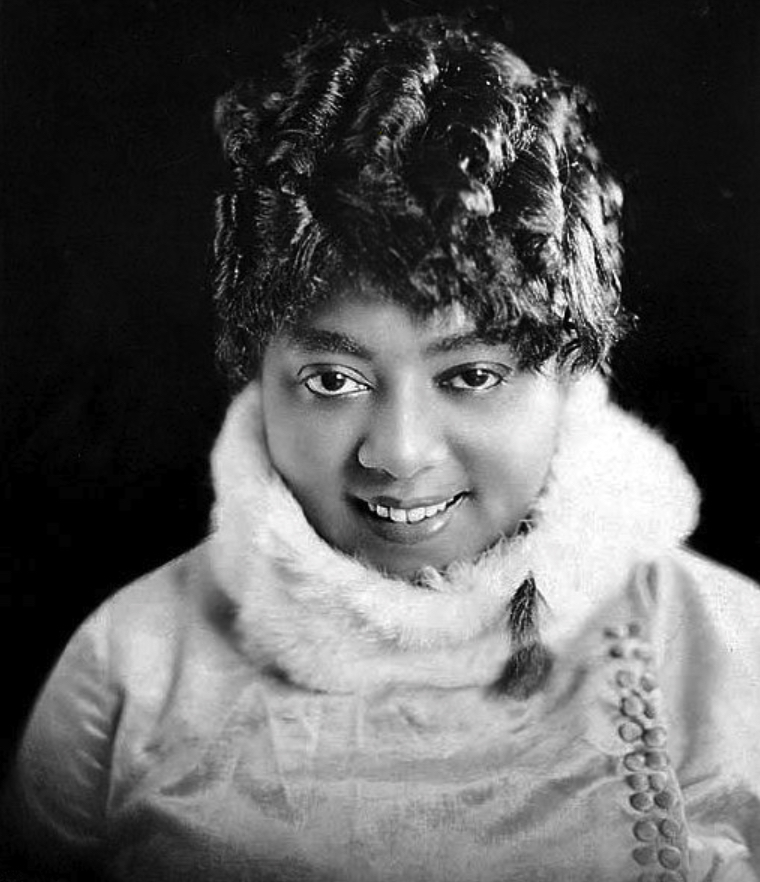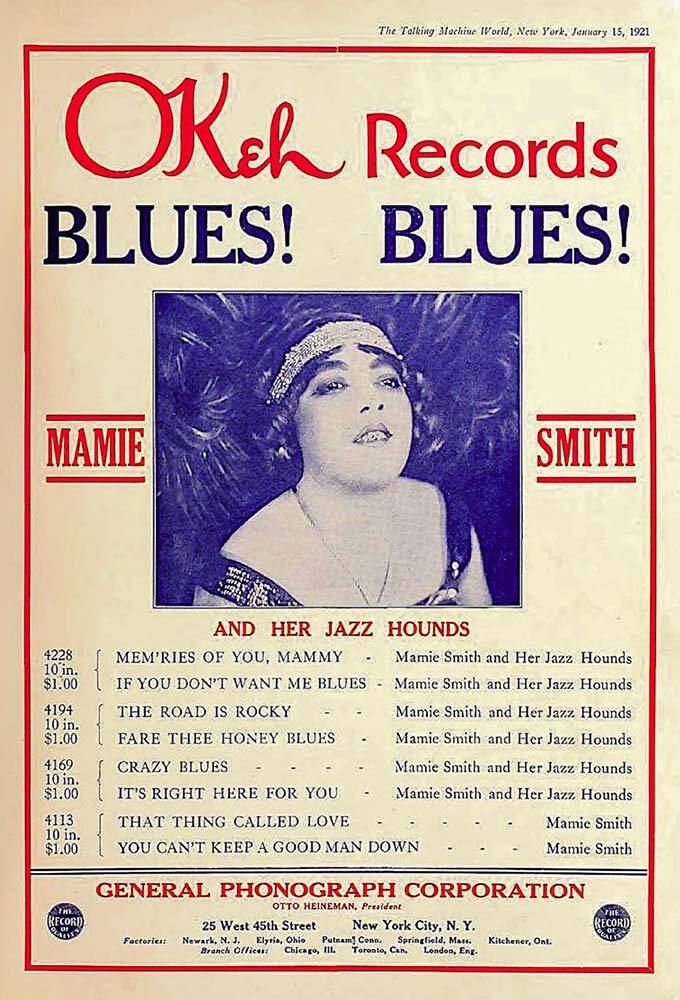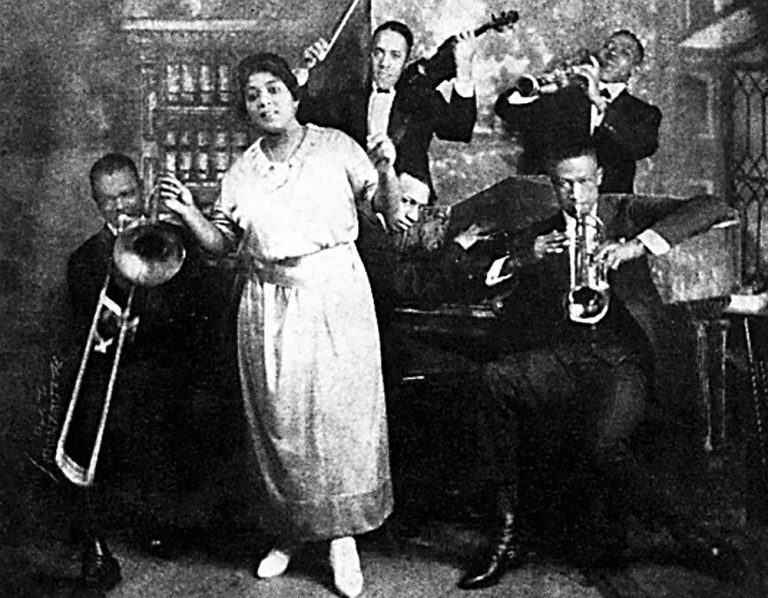Birthplace of Mamie Smith “Queen of the Blues”
Born in Cincinnati in 1891, this Black female music legend is known as the "Queen of Blues"
Born in Cincinnati in 1891, Mamie Smith was a Black performer during the 1920s-30s. She is credited for making the first traditional Blues recording in 1920, with her smash hit “Crazy Blues”, which sold over a million copies in its first year.
Early Life
Mamie (Mary R.) Robinson was born in a boarding house at 14 Perry Street, downtown Cincinnati on September 16, 1891, attended Cincinnati public school, and began performing at the age of 10 on the vaudeville circuit. She sang in dozens of popular Harlem clubs in cabarets and became famous for her sweet contralto voice. After marrying William “Smitty” Smith, a nightclub singer, she changed her last name permanently to Smith.
Music Industry
In 1918, Perry Bradford, actor, dancer, pianist, singer, and songwriter hired Mamie Smith to perform in his Harlem Lincoln Theater Revue, Made in Harlem. Smith’s rendition of Bradford’s “Harlem Blues” was the hit of the show, which was reworked a year later as the “Crazy Blues.” Bradford convinced Frederick Hager, the white director of artists and repertoire (A&R) at OKeh Records, to take a risk and record an African American singer, despite the racist push-back he was sure to get. On February 14, 1920, Smith recorded Bradford’s “That Thing Called Love” and “You Can’t Keep a Good Man Down” with the all-white house orchestra. The record was marginally successful, but six months later, on August 10, 1920, her recording, "Crazy Blues", with a new select band of all-Black musicians, named the Jazz Hounds, was a runaway success. Smith became one of the most successful Black female performers of her generation, earning $1,000 ($13,000 today) for weekly performances, and $100,000 ($1.3 M today) in royalties from over 100 recordings. As a performer, her dresses received as much attention as her singing and she lavishly accessorized with beautiful jewelry, from diamonds to pearls. Shopping at “the most fashionable modists in America,” Smith said, “I feel that the best is none too good for the public that pays to hear a singer.”
Performing in Cincinnati
On April 16, 1921, Mamie Smith, returned home to perform in Cincinnati Music Hall, only the second African American singer up to that time to appear on the Springer Auditorium stage as a solo act, following soprano Sissieretta Jones in 1893. Smith returned to Cincinnati in November 1921 at the Lyceum Theatre on Central Avenue between Fourth and Fifth streets, at the end of the block where she was born. The theater would go through five name changes and become an exclusively African American theater in 1917 before it was razed. Smith performed again in the Roosevelt Theatre, built in the same location, March/April of 1927. Smith’s final appearances in Cincinnati were on the big screen at the Regal Theatre in the West End, in 1945, in the film Paradise in Harlem in which she appeared with King Records Recording Artist, Lucky Millinder.
Although Smith owned homes in New York City, a lavish wardrobe, gold securities, and one of the most splendid automobiles of the day, she lost most everything in the stock market crash of 1929. Floyd Grant Snelson of the Chicago Defender wrote, “She lived off the charity of friends until her death” in a Harlem hospital on October 30, 1946. She defined classic blues in America. Her success inspired and empowered generations of performers and helped establish the preeminence of African American traditions in popular culture.
Blues Legacy
She and her manager Perry Bradford pioneered the first recordings designed, advertised, and sold to Black listeners, tapping a huge new market for what were called “race records.” Her recordings gave voice to African American composers and lyricists, including Perry Bradford, James Timothy “Tim” Brymn, Clarence Williams, Christopher M. Smith, Henry Creamer, and Jay Cee “J.C.” Johnson. As the first Black woman to record blues, Mamie Smith introduced the sound of a strong independent female to the world and paved the way for all who followed, including legends such as Gertrude “Ma” Rainey, Bessie Smith, Clara Smith, Ida Cox, Florence Mills, Lucille Hegamin, Trixie Smith, Mary Stafford, Alberta Hunter, Rosa Henderson, Gertrude Saunders, and Victoria Spivey. Mamie Smith’s April 1921 concert in Cincinnati Music Hall is among the most important musical events ever presented on the Springer Auditorium stage, and in an era of intolerance, was one of the rare occasions where music superseded racial division.
Images


The Talking Machine World, New York, January 15, 1921 Date: 1921
